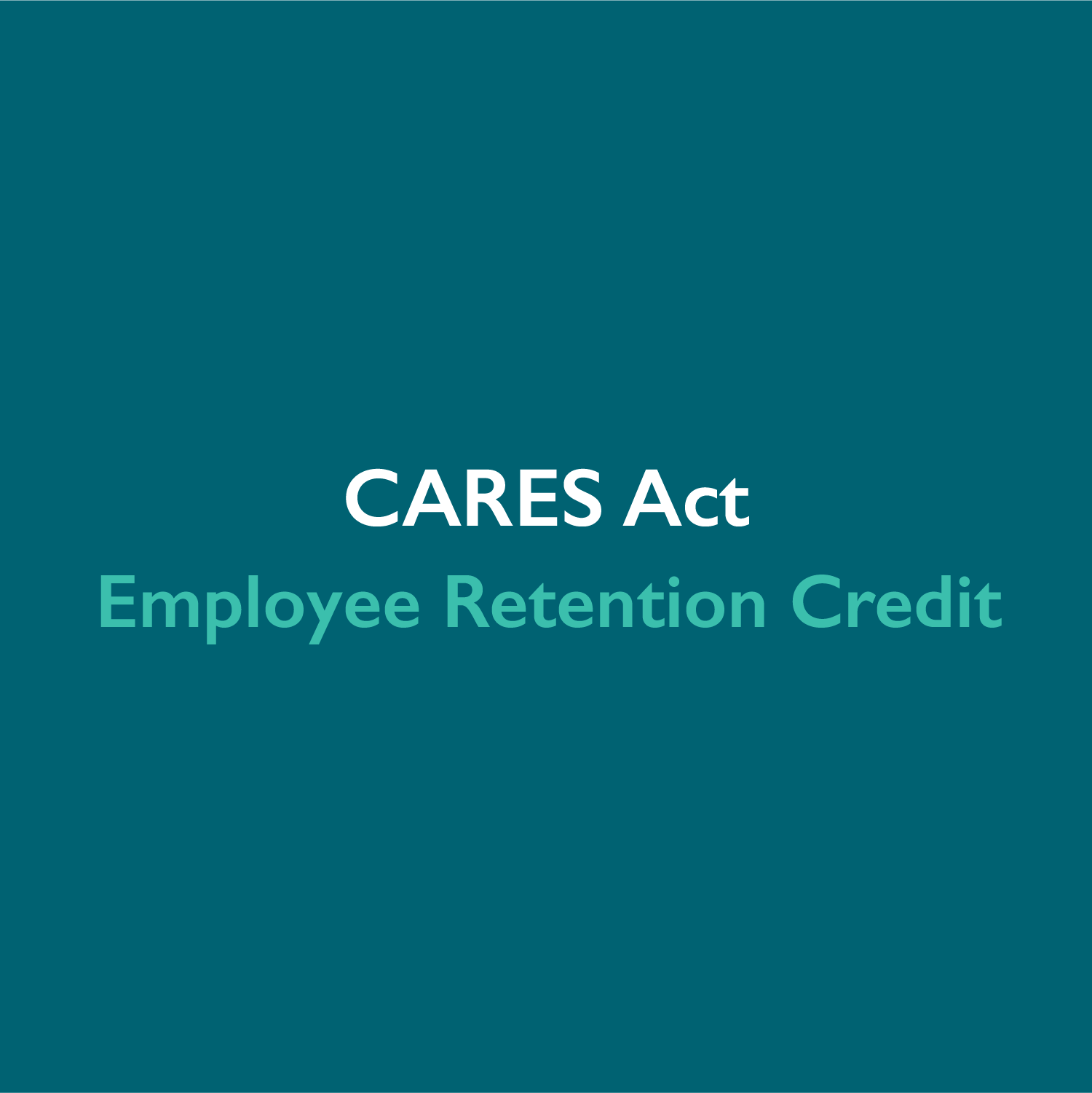Two recent pieces of legislation aim to address the economic hardship that employers may be facing due to COVID-19.
The Families First Coronavirus Relief Act (FFCRA), enacted on March 18, 2020, requires certain employers to pay sick or family leave wages to employees who are unable to work or telework due to certain circumstances related to COVID-19; however under the FFCRA provisions, employers are entitled to a refundable tax credit for the required leave paid, up to specified limits. The Coronavirus Aid, Relief, and Economic Security Act (CARES Act), enacted on March 27, 2020, includes an employee retention tax credit (Employee Retention Credit or ERC) designed to encourage eligible employers to keep employees on their payroll, despite experiencing economic hardship related to COVID-19.
Both Acts have valuable resources for employers, but it’s important to note that the same wages cannot be counted for both credits. Also, employers who have received a Paycheck Protection Program loan may not claim the ERC.
Below, we focus on the key provisions of the Employee Retention Credit in the CARES Act.
Eligible Employers
Eligible employers for the purposes of the ERC are those that carry on a trade or business during calendar year 2020, including a tax-exempt organization, that either:
- Fully or partially suspends operation during any calendar quarter in 2020 due to orders from an appropriate governmental authority limiting commerce, travel, or group meetings (for commercial, social, religious, or other purposes) due to COVID-19; or
- Experiences a significant decline in gross receipts during the calendar quarter.
Governmental employers are not eligible, nor are self-employed individuals for their self-employment services or earnings.
Eligible Time Period
The ERC applies to qualified wages paid after March 12, 2020, and before January 1, 2021. Therefore, an employer may be able to claim the credit for qualified wages paid as early as March 13, 2020.
Maximum Amounts
The credit equals 50 percent of the qualified wages (including qualified health plan expenses) that an eligible employer pays in a calendar quarter. The maximum amount of qualified wages taken into account with respect to each employee for all calendar quarters is $10,000, so that the maximum credit for qualified wages paid to any employee is $5,000.
Qualified Wages
Qualified wages are wages and compensation paid by an eligible employer to employees after March 12, 2020, and before January 1, 2021. Qualified wages include the employer’s qualified health plan expenses that are properly allocable to the wages.
The definition of qualified wages depends, in part, on the average number of full-time employees employed by the eligible employer during 2019.
If the employer averaged more than 100 full-time employees in 2019, qualified wages are the wages paid to an employee for time that the employee is not providing services due to either partial suspension of operations or a significant decline in gross receipts.
For these employers, qualified wages taken into account for an employee may not exceed what the employee would have been paid for working an equivalent duration during the 30 days immediately preceding the period of economic hardship.
If the employer averaged 100 or fewer full-time employees in 2019, qualified wages are the wages paid to any employee during any period of economic hardship described in the above.
How to Claim ERC
Eligible employers will report their total qualified wages and the related credits for each calendar quarter on their federal employment tax returns, usually Form 941, Employer’s Quarterly Federal Tax Return. Form 941 is used to report income and social security and Medicare taxes withheld by the employer from employee wages, as well as the employer’s portion of social security and Medicare tax.
In anticipation of receiving the credits, employers can fund qualified wages by accessing federal employment taxes, including withheld taxes, that are required to be deposited with the IRS or by requesting an advance of the credit from the IRS.
Reducing Federal Employment Tax Deposits
An eligible employer may fund the qualified wages by accessing federal employment taxes, including those that the employer already withheld, that are set aside for deposit with the IRS, for other wage payments made during the same quarter as the qualified wages.
That is, an employer that pays qualified wages to its employees in a calendar quarter before it is required to deposit federal employment taxes with the IRS for that quarter may reduce the amount of federal employment taxes it deposits for that quarter by half of the amount of the qualified wages paid in that calendar quarter. The employer must account for the reduction in deposits on the Form 941, Employer’s Quarterly Federal Tax Return, for the quarter.
No Failure to Deposit Penalty
An eligible employer will not be subject to a penalty for failing to deposit federal employment taxes relating to qualified wages in a calendar quarter if certain criteria are met. For more information, about the relief from the penalty for failure to deposit federal employment taxes on account of qualified wages, see Notice 2020-22 (PDF).
Advance Payment of ERC
Because quarterly returns are not filed until after qualified wages are paid, some eligible employers may not have sufficient federal employment taxes set aside for deposit to the IRS to fund their qualified wages. Accordingly, the IRS has established a procedure for obtaining an advance of the refundable credits using Form 7200, Advance Payment of Employer Credits Due to COVID-19.
Social Security Taxes
The credit is allowed against the employer portion of social security taxes, and the portion of taxes imposed on railroad employers under the Railroad Retirement Tax Act (RRTA) that corresponds to the social security taxes.
Fully Refundable
The credits are fully refundable because the eligible employer may get a refund if the amount of the credit is more than certain federal employment taxes the employer owes. That is, if for any calendar quarter the amount of the credit the employer is entitled to exceeds the employer portion of the social security tax on all wages (or on all compensation for employers subject to RRTA) paid to all employees, then the excess is treated as an overpayment and refunded to the employer.
Not Required
The CARES Act does not require employers to pay qualified wages. In addition, eligible employers may elect to not claim the credit for the Employee Retention Credit. (The FFCRA does require certain employers to pay sick or family leave wages to employees who are unable to work or telework due to a COVID-19 circumstance. These employers may be entitled to a refundable tax credit for those wages paid, although, again, the employers may elect not to claim the credit.)
Collecting Credits from FFCRA and ERC
Eligible employers may receive both tax credits for the qualified leave wages under the FFCRA and the Employee Retention Credit under the CARES Act, but not for the same wages. The amount of qualified wages for which an employer may claim the ERC does not include the amount of qualified sick and family leave wages for which the employer received tax credits under the FFCRA.
You can read the full breakdown provided by the IRS here.
____________________________________
We highly recommend you confer with your Miller Kaplan advisor to understand your specific situation and how this may impact you.



